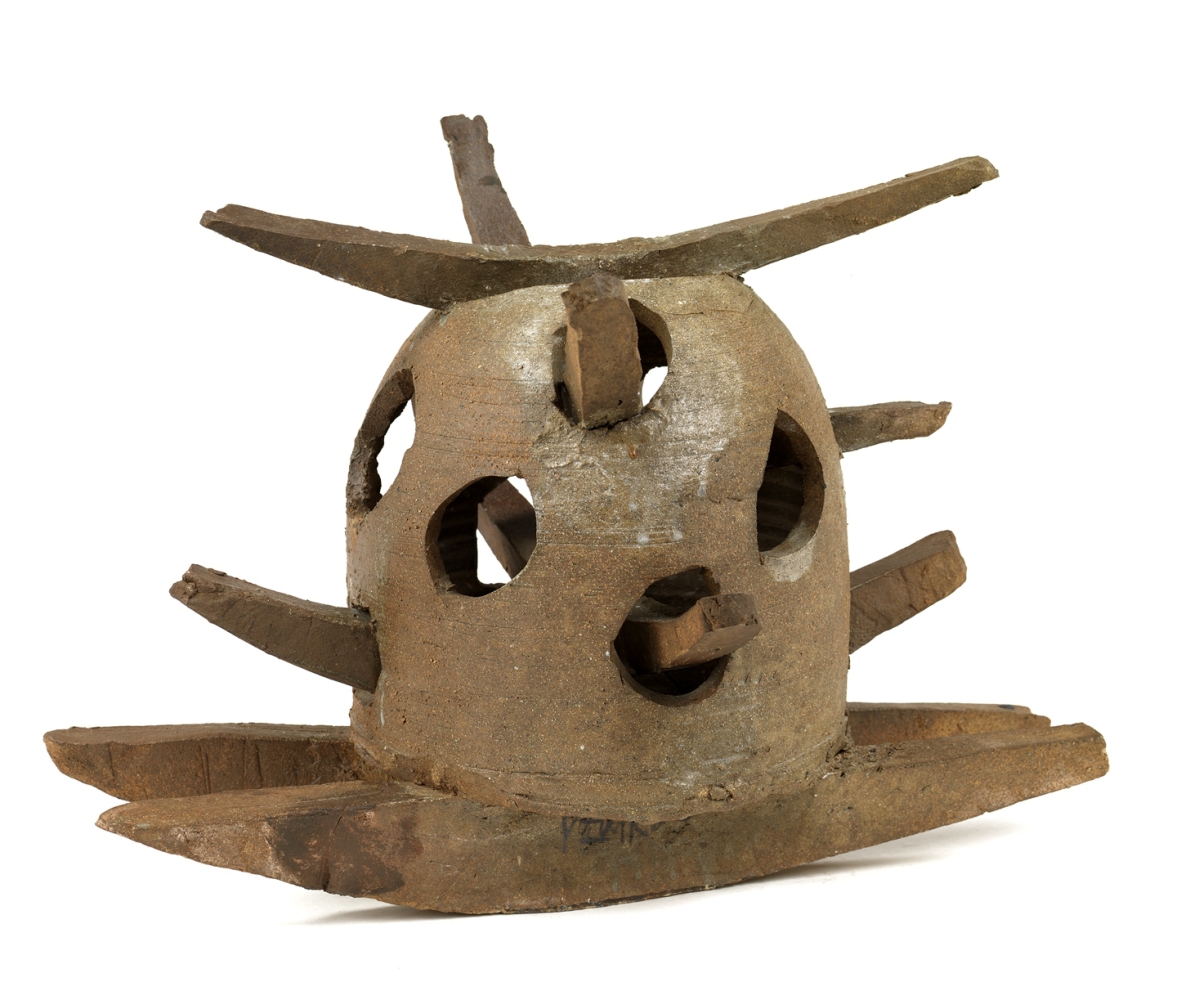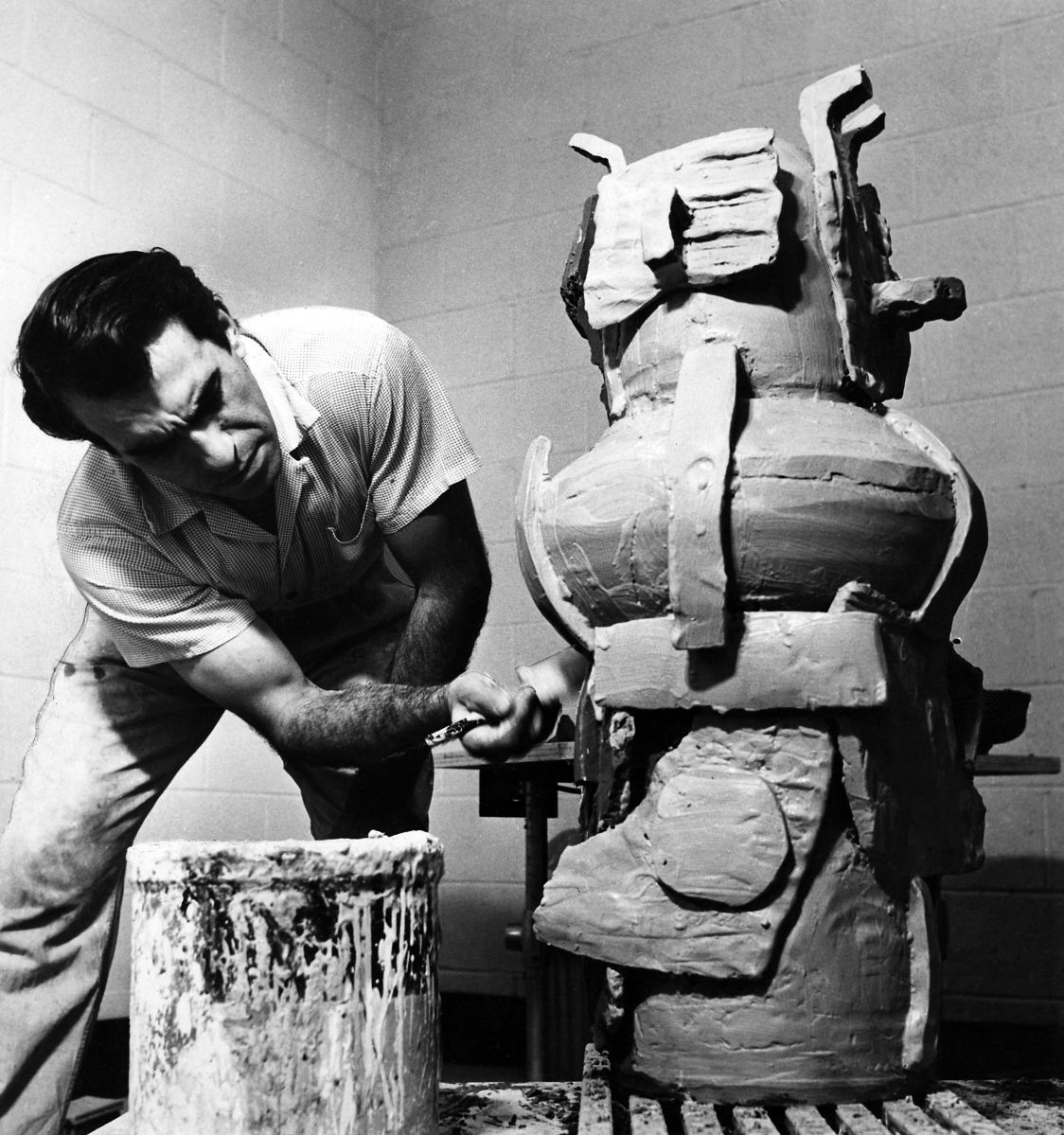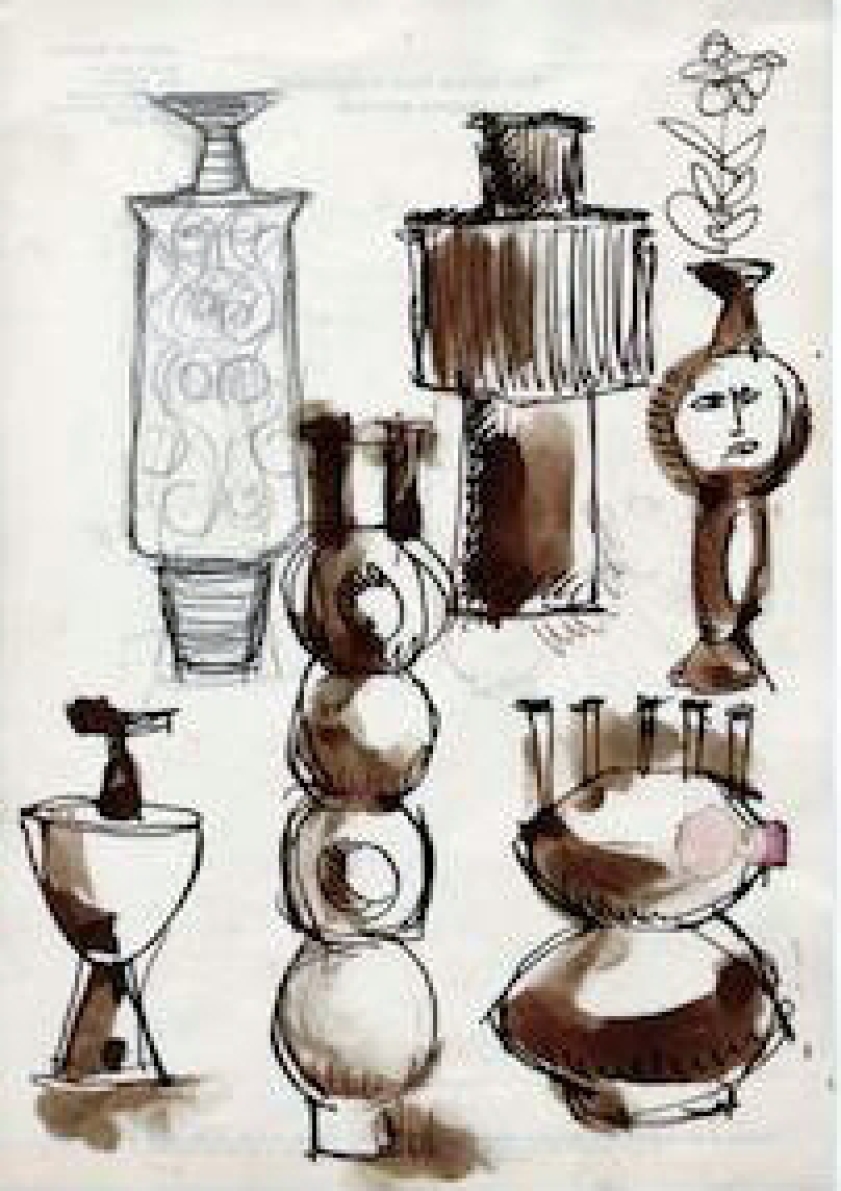
“Rocking Pot,” 1956, stoneware and colemanite wash, thrown and slab constructed, assembled. Smithsonian American Art Museum, gift of the James Renwick Alliance and various donors and museum purchase, 1983.
WASHINGTON, DC – Peter Voulkos (1924-2002) was one of the most influential American ceramicists of the Twentieth Century, celebrated for a radical approach that fundamentally transformed the field in a single decade. He defied midcentury craft dictums and reinvented his medium, combining wheel throwing with slab-building, traditional glazes with epoxy paint, figuration with abstraction and building large-scale ceramic structures with complex internal engineering, as he developed his avant-garde forms and techniques.

Peter Voulkos working on an untitled piece in Glendale studio, 1956. —Oppi Untracht photo, courtesy of the Voulkos & Co. Catalogue Project.
“Voulkos: The Breakthrough Years” is on view at the Renwick Gallery of the Smithsonian American Art Museum through August 20. The exhibition is the first to examine his early career from 1953 to 1968. It was initially presented at the Museum of Arts and Design (MAD) in New York City and is curated by guest curators Glenn Adamson, senior scholar at the Yale Center for British Art; Andrew Perchuk, deputy director, Getty Research Institute; and Barbara Paris Gifford, assistant curator at MAD. Robyn Kennedy, chief administrator at the Renwick Gallery, coordinated the presentation in Washington.
The exhibition features 31 examples from this crucial body of early work, most of which have not been exhibited on the East Coast for four decades. Also included are three of the artist’s rarely seen works in oil on canvas, which help to demonstrate how Voulkos developed his ideas concurrently in pottery, painting and sculpture.
“We are starting 2017 at the Renwick with exhibitions exploring the work of Peter Voulkos and June Schwarcz, two midcentury artists who utterly transformed their disciplines, and in turn, modern craft,” said Abraham Thomas, Fleur and Charles Bresler curator-in-charge at the Renwick Gallery. “Both of them exuded a spirit of creative disruption through their groundbreaking experimentation with materials and process and by challenging what a handmade object could be.”
Voulkos began his career as a traditional potter, establishing himself as one of the country’s leading postwar functional ceramicists. In 1955, he began to experiment with increasingly unconventional works inspired by a variety of influences, including Abstract Expressionism, Japanese pottery and artworks of Franz Kline and Pablo Picasso. Voulkos soon rejected the orthodoxy of technique, utility and form, instead pursuing a range of ideas that were entirely new to the medium.
He reimagined utilitarian form, breaking down component parts and reconfiguring them into a new visual language. He used color and contrast to disrupt the visual integrity of his objects and built monumental sculptures. His works, sometimes created as part of live demonstrations, reflected an intense physicality as well as a sense of immediacy and improvisation. Voulkos explored other media and developed distinctive bodies of work in painting and bronze sculpture, but continually returned to pottery forms to demonstrate their endless potential for experimentation.

Peter Voulkos drawing, not dated, ink on Archie Bray Foundation letterhead stationery. Collection of Pier Voulkos.
“Peter Voulkos expanded the possibilities of the medium in such a profound way that we continue to feel his influence decades later,” said Kennedy. “This exhibition enables us to appreciate the ingenuity of the years that would define both his career and modern ceramics.”
The objects on display include several of Voulkos’ seminal early works, including the museum’s “Rocking Pot,” 1956, “Sitting Bull,” 1959, from the Santa Barbara Museum of Art and “Red River,” about 1960, from the Whitney Museum of American Art, as well as four of his 1968 monumental blackware pots. The exhibition will also include an archival video of Voulkos at work and photographs of the artist in his studio.
The exhibition catalog includes essays by the exhibition curators and others, and is the first monograph on Voulkos in more than 20 years.
“Voulkos: The Breakthrough Years” was organized by the Museum of Arts and Design in New York City by Andrew Perchuk, deputy director of the Getty Research Institute, and guest curator Glenn Adamson, with assistant curator Barbara Paris Gifford.
The Renwick Gallery, the Smithsonian American Art Museum’s branch for contemporary craft and decorative arts, is on Pennsylvania Avenue at 17th Street NW. For information, 202-633-1000 or www.americanart.si.edu.













